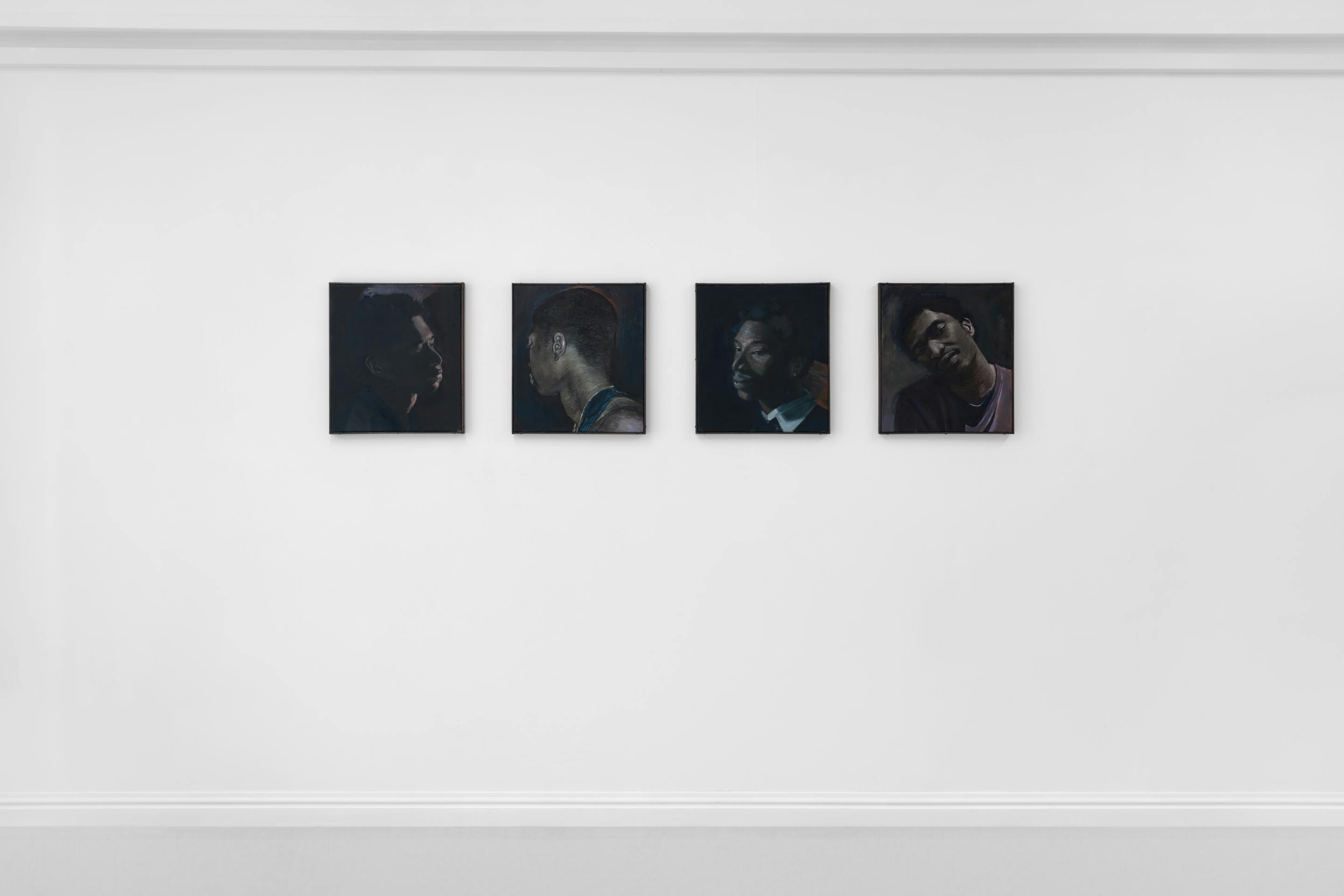
The eight visages you see are of Laurie’s boyfriend Timothy; his closest companion. Depicted during intimate moments of repose, Laurie’s often most drawn to painting those who are important to him. Taking inspiration from historical portraiture, Laurie streamlines these seemingly traditional techniques through a queer lens, encapsulating his sitter in states of both resilience and vulnerability. To Laurie, portraiture is diaristic, in his words, ‘a means by which queer lives are documented and whose stories are told by those who experienced them’. For ‘A Flower for a Heart’ Timothy is revealed in glimpses of impassioned emotion, rarely courting the viewer yet conceived with a softness of brush, his glinting eyes pervading through the cerulean blue shadows.
The paintings appear as if cast in the dead of night, Laurie, like many of the impressionists favouring accumulated layers of deep blue oils rather than black. Many of his favourite paintings spare natural light in favour of dark moonlit tones, the protagonist in painting, for example, emerging from a moss green backdrop haloed by a blue outline, or the nude in is revealed only through deft swathes of white over emerald tones behind. Laurie attends to layers beneath with lurid red’s, calling to mind arresting portrait of a young boy, or painting of Elena Carafa in which flecks of colour accentuate the clarity of expression on top.
Laurie situates himself across a long line of queer artists who like him documented everyday life through their art, notably the paintings of , or the writings of . Both tragically died of AIDS, but their influence eternally lives on in Laurie’s mind. He expresses his appreciation by painting the icons in his immediate vicinity, repetitively painting them in transitory states of emotion. He feels duty-bound to paint what he sees as an act of redemption for the homophobia and transphobia which surrounds the world beyond his studio. Laurie paints his muse with certainty and pride, paralleling the internal resistance Timothy feels for his native Nigeria’s stance on prohibiting his sexuality.
Timothy is painted from a place of comfort, reciprocating the very connection they shared when in the room together. Laurie writes that his paintings seek ‘desire, tenderness, loneliness and our need for connection’. His brush work is textural and made up of amassing small marks that appear on first glance like dubbed marks on sculpted clay. Another of his inspirations would achieve similarly speckled detail in his portraits, disclosing glimpses of a more vibrant world behind his sitters. ‘A Flower for a Heart’ is taken from a line in Garth Greenwell’s novel ‘Cleanness’, in which the narrator is attempting to recall the poems origin. But it’s precisely this sense of discovery which keeps Laurie searching, incessantly finding more about his sitter, pushing deeper, painting anew to always stay surprised.
Laurie Smith (b.1994, Huddersfield, UK) Lives and works in London. Selected exhibitions include: Day by Day, Good Day, Union Pacific, London (Group, 2023), Stranger Than Paradise, VO Curations, London (Group, 2022), Sky-Blue and Green, VO Curations, London (Group, 2020).
References
1
Victor Man, Girl with laughing cat, 2022
2
3
4
5
6
7
Laurie Smith, A Flower for a Heart
February 15 – March 16, 2024















